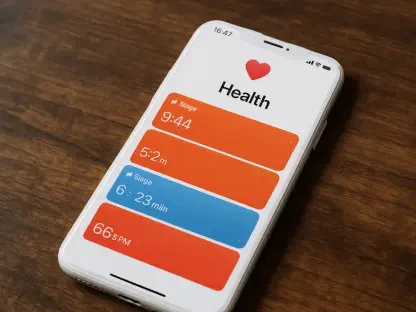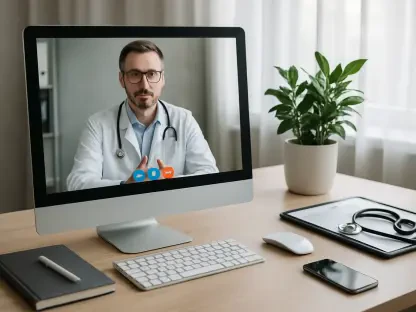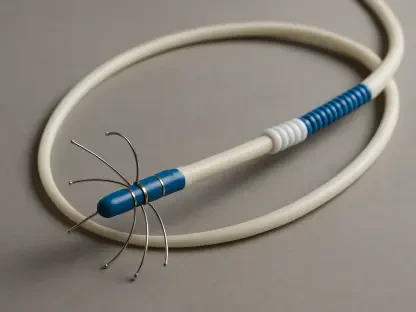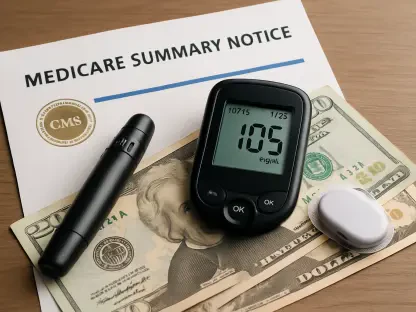In a nation where the cost of life-saving medications can bankrupt families, a staggering statistic emerges: biologic drugs, vital for treating conditions like cancer and rheumatoid arthritis, often cost patients upwards of $50,000 annually, creating a significant barrier to access. This leaves countless individuals struggling to afford the care they desperately need, but a seismic shift is on the horizon with the Food and Drug Administration (FDA) unveiling a transformative policy aimed at slashing the costs of biosimilars—near-identical alternatives to these expensive biologics—potentially reshaping the healthcare landscape.
Why Are Biologic Drugs So Expensive, and What’s Changing Now?
Biologic drugs, derived from living cells, represent some of the most advanced therapies available today, targeting complex diseases with precision. However, their intricate manufacturing processes, involving years of research and rigorous testing, drive costs into the stratosphere. A single course of treatment can drain savings, with prices often reflecting not just development expenses but also limited market competition, allowing branded drugmakers to maintain high profit margins.
The status quo, however, is under challenge. The FDA’s latest policy, announced recently, targets the heart of this cost crisis by streamlining the approval process for biosimilars. By reducing regulatory hurdles, the agency aims to flood the market with more affordable alternatives, breaking the monopoly of branded biologics and offering a lifeline to patients burdened by exorbitant bills.
This shift signals a departure from traditional barriers that have kept prices inflated. With development expenses for biosimilars historically reaching between $100 million and $250 million, the new approach promises to cut these figures dramatically, setting the stage for a potential revolution in drug affordability.
The Big Picture: Biosimilars as a Solution to Skyrocketing Costs
Biosimilars hold immense promise as a counterweight to the spiraling costs of healthcare in the United States, where biologic drugs account for a significant portion of prescription spending. Designed to mirror the safety and efficacy of their branded counterparts, these alternatives could save billions annually for patients and insurers if widely adopted. The concept is simple: increase supply, foster competition, and drive prices down.
Yet, despite their introduction over a decade ago, biosimilars have struggled to gain traction, capturing less than 20% of the market share for biologics, according to FDA estimates. Unlike generic versions of simpler drugs, which dominate their markets due to lower costs, biosimilars face unique challenges stemming from their biological complexity and entrenched market dynamics favoring branded products.
This slow uptake has frustrated efforts to curb healthcare expenses, leaving many to question why a solution with such potential remains underutilized. The FDA’s intervention seeks to address this gap, aiming to unlock the cost-saving power of biosimilars by making their path to market faster and less expensive, a move that could redefine access to critical therapies.
Breaking Down the FDA’s Bold New Policy on Biosimilars
At the core of the FDA’s recent guidance, released on October 29, is a groundbreaking decision to eliminate mandatory clinical trials comparing the efficacy and safety of biosimilars to their branded equivalents. Previously, these trials, costing an average of $24 million each and spanning years, posed a formidable barrier to developers. The agency now estimates that waiving such requirements could save up to $100 million per product, relying instead on advanced analytical assessments to ensure quality.
This policy builds on earlier reforms, such as the 2024 proposal to ease interchangeability standards, allowing pharmacists to substitute biosimilars for branded drugs without additional prescriptions. Commissioner Martin Makary emphasized during a press conference that these changes are designed to create “more competition and more choices” for patients dependent on costly biologics for chronic conditions.
Real-world impact is already visible with examples like Amgen’s Amjevita, a biosimilar to Humira, which faced extensive testing under old rules. Under the new framework, such products could reach consumers sooner and at lower costs, illustrating the tangible potential of this regulatory overhaul to transform the biologics market.
Voices from the Field: What Stakeholders Are Saying
Industry leaders have greeted the FDA’s policy shift with resounding approval, viewing it as a long-overdue catalyst for change. Juliana Reed, executive director of the Biosimilars Forum, hailed the guidance as a “momentous step” toward unlocking the affordability of prescription drugs, reflecting a shared optimism among manufacturers eager to bring products to market.
Echoing this sentiment, the Pharmaceutical Care Management Association called the removal of redundant interchangeability studies a “watershed moment” for patient access. This consensus among stakeholders underscores a unified belief that regulatory simplification is essential to overcoming systemic obstacles in the biosimilar space.
Despite this enthusiasm, some caution lingers about unresolved market challenges, such as pricing strategies by branded drugmakers that deter substitution. Nevertheless, the collective voice of advocates and managers signals strong support for the FDA’s direction, highlighting a pivotal moment in the push for cheaper biologic therapies.
How This Policy Could Lower Drug Costs: What to Expect
For patients and healthcare providers, the FDA’s new approach offers a glimmer of hope in tangible cost reductions. By slashing development expenses for biosimilars, the policy paves the way for increased competition, which could drive down prices significantly if more developers enter the fray. Savings of $100 million per product might eventually reflect in lower out-of-pocket costs for treatments.
However, barriers to widespread adoption persist, including complex contracting practices that favor branded drugs and limited awareness among providers about biosimilar options. Addressing these issues will be crucial to ensuring that cost savings reach consumers, requiring coordinated efforts beyond regulatory reform alone.
Navigating this evolving landscape means staying informed about available biosimilars and advocating for their inclusion in formularies. As the policy takes effect, patients and providers can anticipate a gradual shift toward more accessible treatments, provided that market and educational hurdles are tackled with equal determination.
Reflecting on a Milestone for Healthcare Affordability
Looking back, the FDA’s announcement marked a defining chapter in the battle against soaring drug costs, offering a bold strategy to make biologic therapies more attainable. The decision to streamline biosimilar approvals by cutting costly clinical trials stood as a testament to the power of regulatory innovation in addressing systemic challenges. Stakeholder endorsements amplified the significance of this moment, painting a picture of collective hope for a more equitable healthcare system. Moving forward, the focus shifted toward ensuring that these savings translated to real-world impact, urging policymakers and industry players to dismantle remaining market barriers. Continued advocacy and education emerged as vital steps to empower patients, ensuring that the promise of affordable care became a lasting reality.









